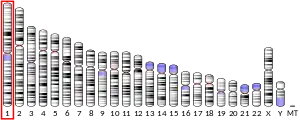| ANP32E | |||||||||||||||||||||||||||||||||||||||||||||||||||
|---|---|---|---|---|---|---|---|---|---|---|---|---|---|---|---|---|---|---|---|---|---|---|---|---|---|---|---|---|---|---|---|---|---|---|---|---|---|---|---|---|---|---|---|---|---|---|---|---|---|---|---|
| |||||||||||||||||||||||||||||||||||||||||||||||||||
| Identifiers | |||||||||||||||||||||||||||||||||||||||||||||||||||
| Aliases | ANP32E, LANP-L, LANPL, acidic nuclear phosphoprotein 32 family member E | ||||||||||||||||||||||||||||||||||||||||||||||||||
| External IDs | OMIM: 609611 HomoloGene: 137403 GeneCards: ANP32E | ||||||||||||||||||||||||||||||||||||||||||||||||||
| |||||||||||||||||||||||||||||||||||||||||||||||||||
| |||||||||||||||||||||||||||||||||||||||||||||||||||
| |||||||||||||||||||||||||||||||||||||||||||||||||||
| |||||||||||||||||||||||||||||||||||||||||||||||||||
| Wikidata | |||||||||||||||||||||||||||||||||||||||||||||||||||
| |||||||||||||||||||||||||||||||||||||||||||||||||||
Acidic leucine-rich nuclear phosphoprotein 32 family member E is a protein that in humans is encoded by the ANP32E gene.[3][4] The ANP32E gene is located on chromosome 1q22.[3] In mammalian cells, ANP32E has been shown to be an H2A.Z chaperone capable of promoting the removal of H2A.Z from chromatin.[5] In brain tissue, ANP32E together with Cpd1 regulate protein phosphatase 2A activity at synapses during synaptogenesis[6] and has been observed to form a complex with ANP32A and SET that stabilizes short-lived mRNAs containing AU-rich elements, as well as having acetyltransferase inhibitory activity (in a complex with SET) and having a role in chromatin remodeling and transcriptional regulation.[7]
See also
References
- 1 2 3 GRCh38: Ensembl release 89: ENSG00000143401 - Ensembl, May 2017
- ↑ "Human PubMed Reference:". National Center for Biotechnology Information, U.S. National Library of Medicine.
- 1 2 Jiang M, Ma Y, Ni X, Cao G, Ji C, Cheng H, Tang R, Xie Y, Mao Y (Nov 2002). "Molecular cloning and characterization of a novel human gene (ANP32E alias LANPL) from human fetal brain". Cytogenet Genome Res. 97 (1–2): 68–71. doi:10.1159/000064058. PMID 12438741. S2CID 30549428.
- ↑ "Entrez Gene: ANP32E acidic (leucine-rich) nuclear phosphoprotein 32 family, member E".
- ↑ Obri A, Ouararhni K, Papin C, Diebold ML, Padmanabhan K, Marek M, Stoll I, Roy L, Reilly PT, Mak TW, Dimitrov S, Romier C, Hamiche A (2014). "ANP32E is a histone chaperone that removes H2A.Z from chromatin". Nature. 505 (7485): 648–53. Bibcode:2014Natur.505..648O. doi:10.1038/nature12922. PMID 24463511. S2CID 4406370.
- ↑ Costanzo RV, Vilá-Ortíz GJ, Perandones C, Carminatti H, Matilla A, Radrizzani M (2006). "Anp32e/Cpd1 regulates protein phosphatase 2A activity at synapses during synaptogenesis". Eur. J. Neurosci. 23 (2): 309–24. doi:10.1111/j.1460-9568.2005.04555.x. PMID 16420440. S2CID 46587416.
- ↑ Santa-Coloma, T.A. (2003). "Anp32e (Cpd1) and related protein phosphatase 2 inhibitors". Cerebellum. 2 (4): 310–20. doi:10.1080/14734220310017212. PMID 14964690. S2CID 21454532.
External links
- Human ANP32E genome location and ANP32E gene details page in the UCSC Genome Browser.
Further reading
- Matilla A, Radrizzani M (2005). "The Anp32 family of proteins containing leucine-rich repeats". Cerebellum. 4 (1): 7–18. doi:10.1080/14734220410019020. PMID 15895553. S2CID 39153579.
- Maruyama K, Sugano S (1994). "Oligo-capping: a simple method to replace the cap structure of eukaryotic mRNAs with oligoribonucleotides". Gene. 138 (1–2): 171–4. doi:10.1016/0378-1119(94)90802-8. PMID 8125298.
- Hartley JL, Temple GF, Brasch MA (2001). "DNA cloning using in vitro site-specific recombination". Genome Res. 10 (11): 1788–95. doi:10.1101/gr.143000. PMC 310948. PMID 11076863.
- Andersen JS, Lam YW, Leung AK, Ong SE, Lyon CE, Lamond AI, Mann M (2005). "Nucleolar proteome dynamics". Nature. 433 (7021): 77–83. Bibcode:2005Natur.433...77A. doi:10.1038/nature03207. PMID 15635413. S2CID 4344740.
- Radrizzani, M.; Vilá-Ortiz, G.; Cafferata, E. G.; Di Tella, M. C.; González-Guerrico, A.; Perandones, C.; Pivetta, O. H.; Carminatti, H.; Idoyaga Vargas, V. P.; Santa-Coloma, T. A. (2001). "Differential expression of CPD1 during postnatal development in the mouse cerebellum". Brain Research. 907 (1–2): 162–174. doi:10.1016/s0006-8993(01)02351-4. PMID 11430900. S2CID 29698240.
- Radrizzani, M.; Brocardo, M. G.; Gonzalez Solveyra, C.; Bianchini, M.; Reyes, G. B.; Cafferata, E. G.; Vilá Ortiz, G.; Santa-Coloma, T. A. (2000). "Development of monoclonal oligobodies and chemically synthesized oligobodies". Medicina. 60 (Suppl 2): 55–60. PMID 11188933.
This article is issued from Wikipedia. The text is licensed under Creative Commons - Attribution - Sharealike. Additional terms may apply for the media files.



